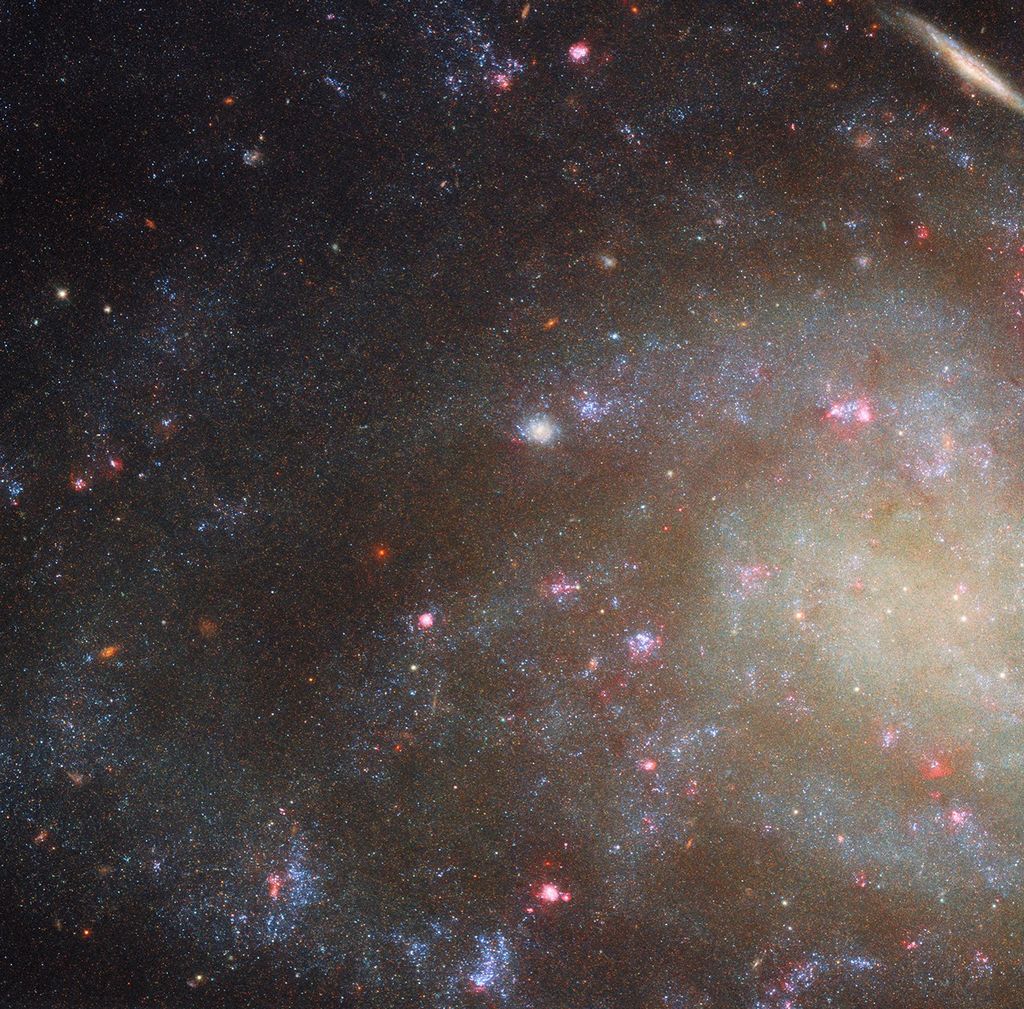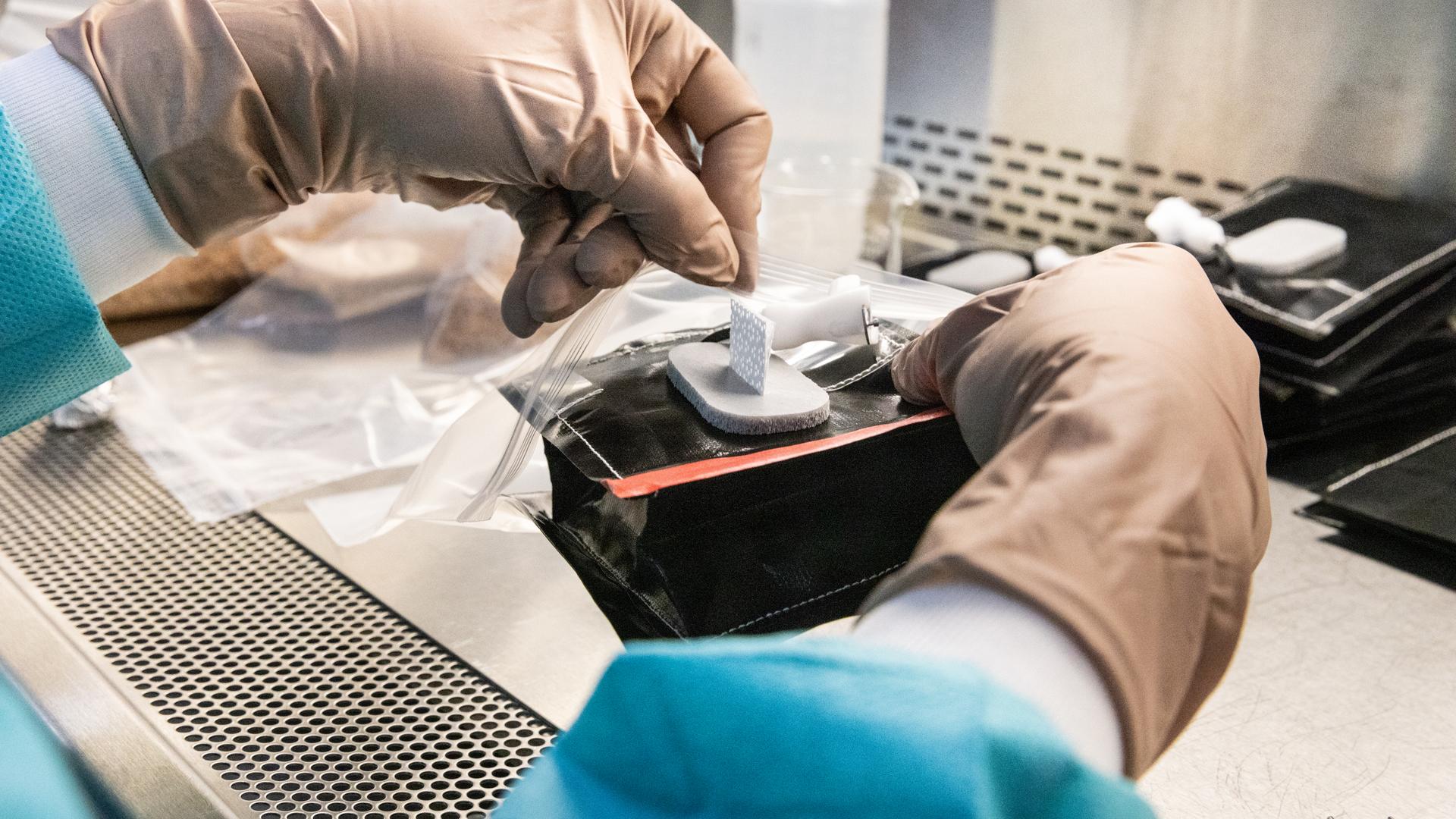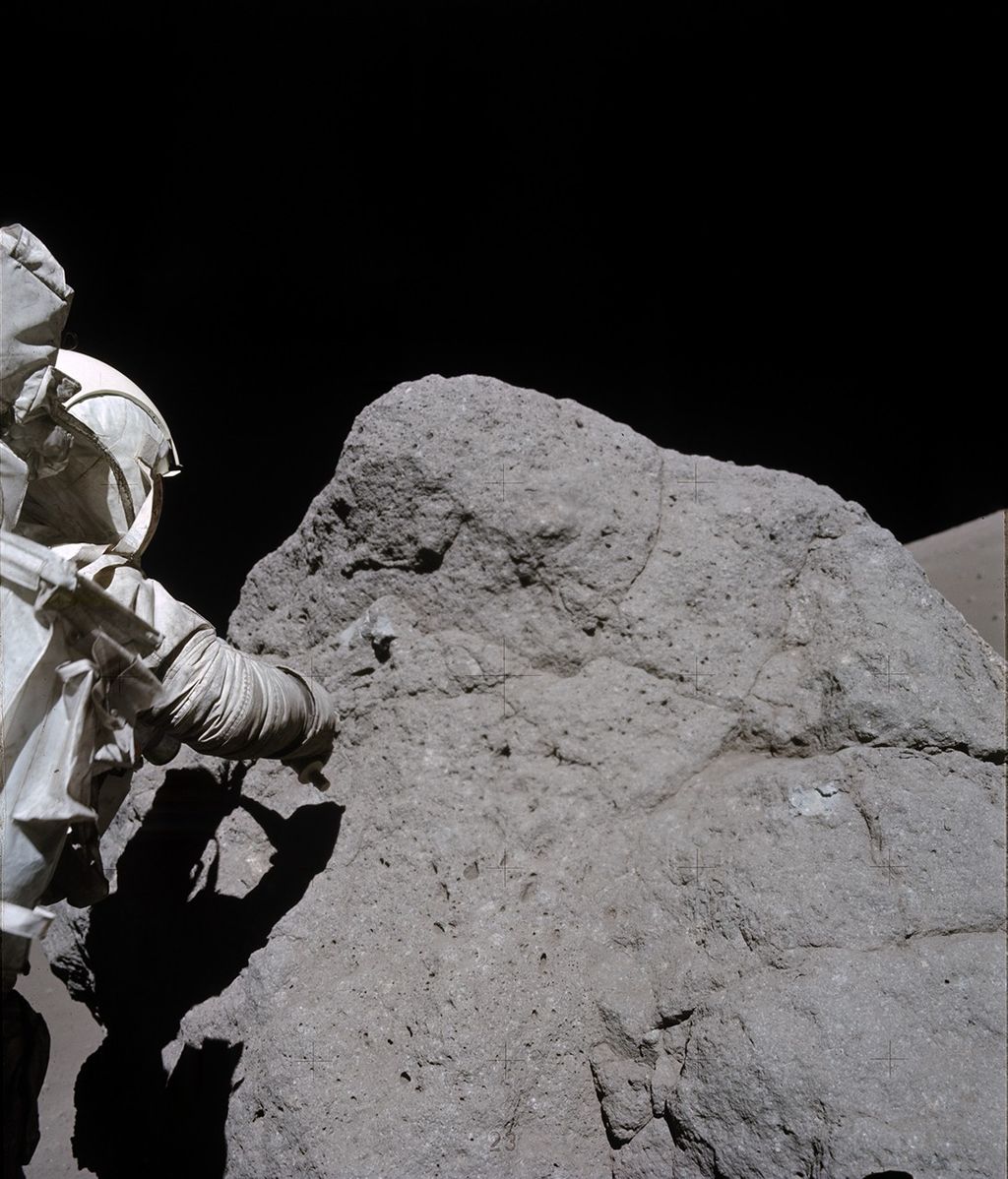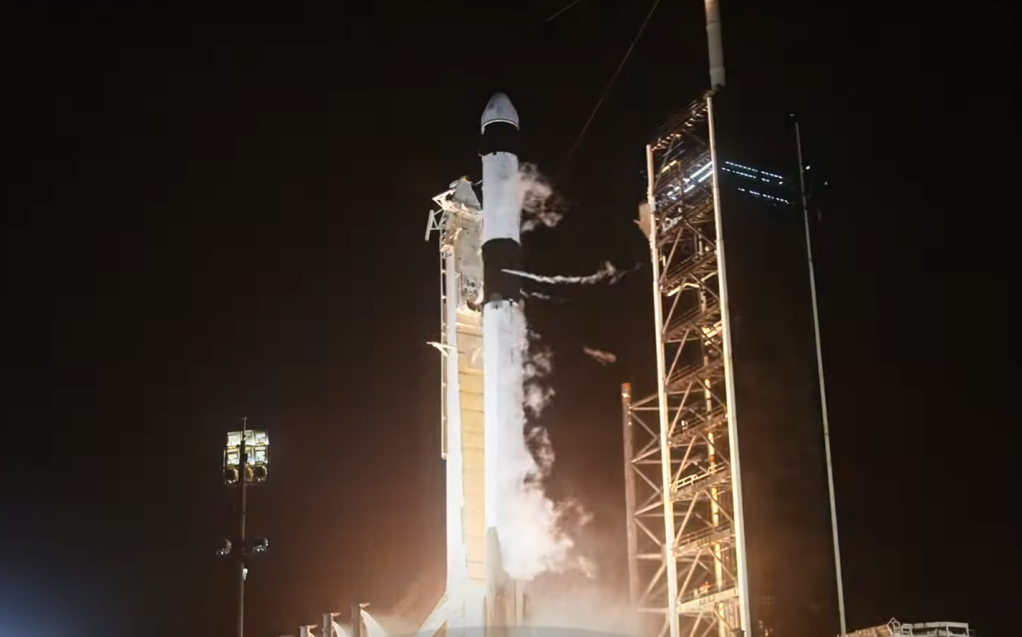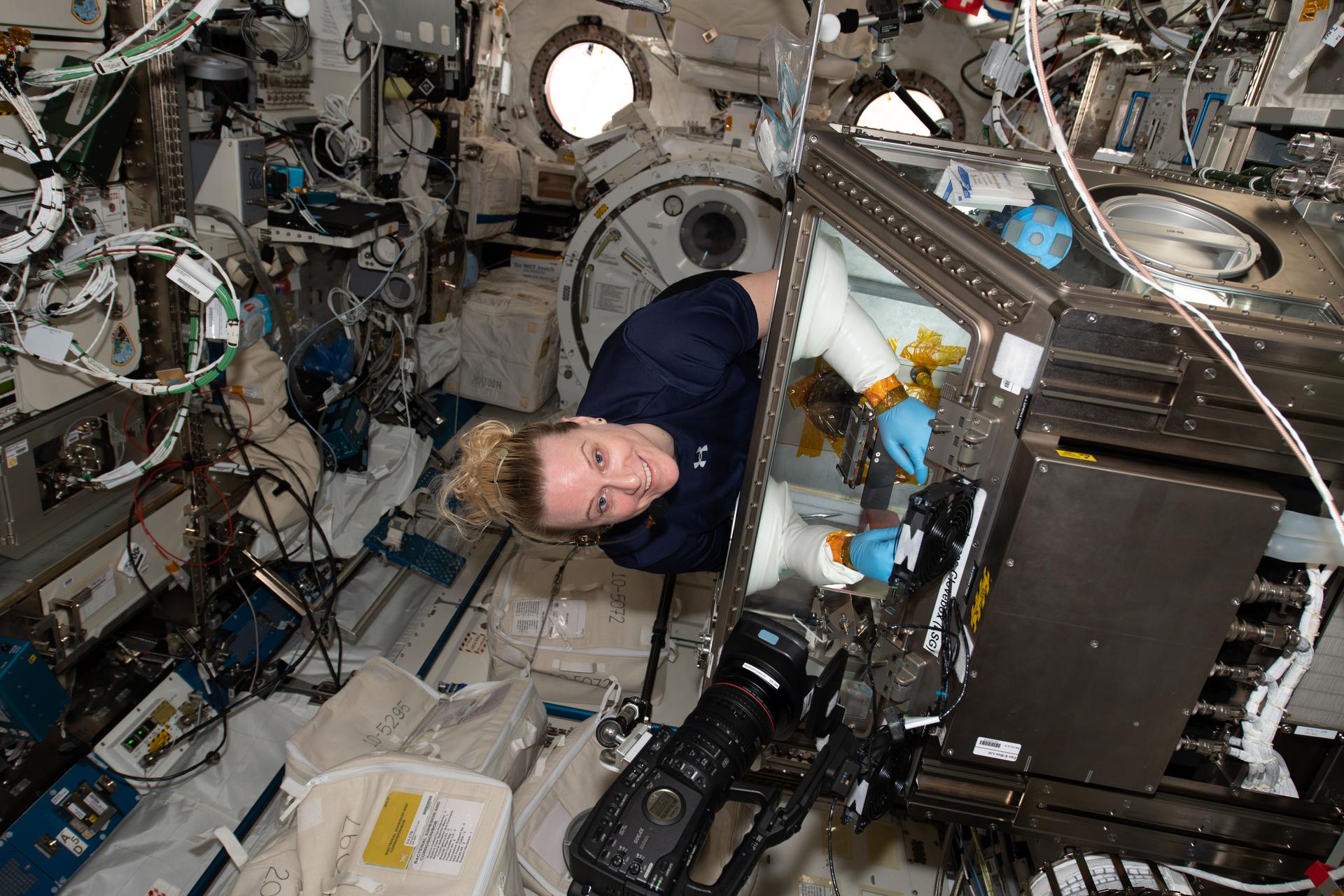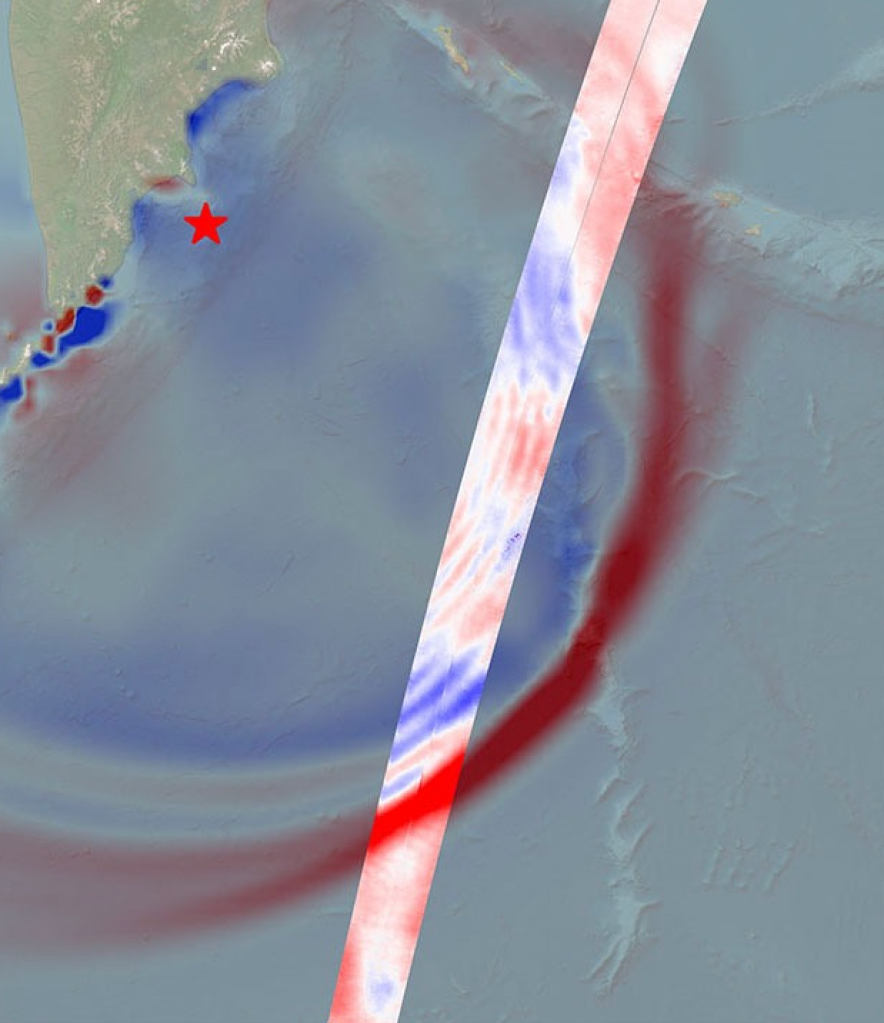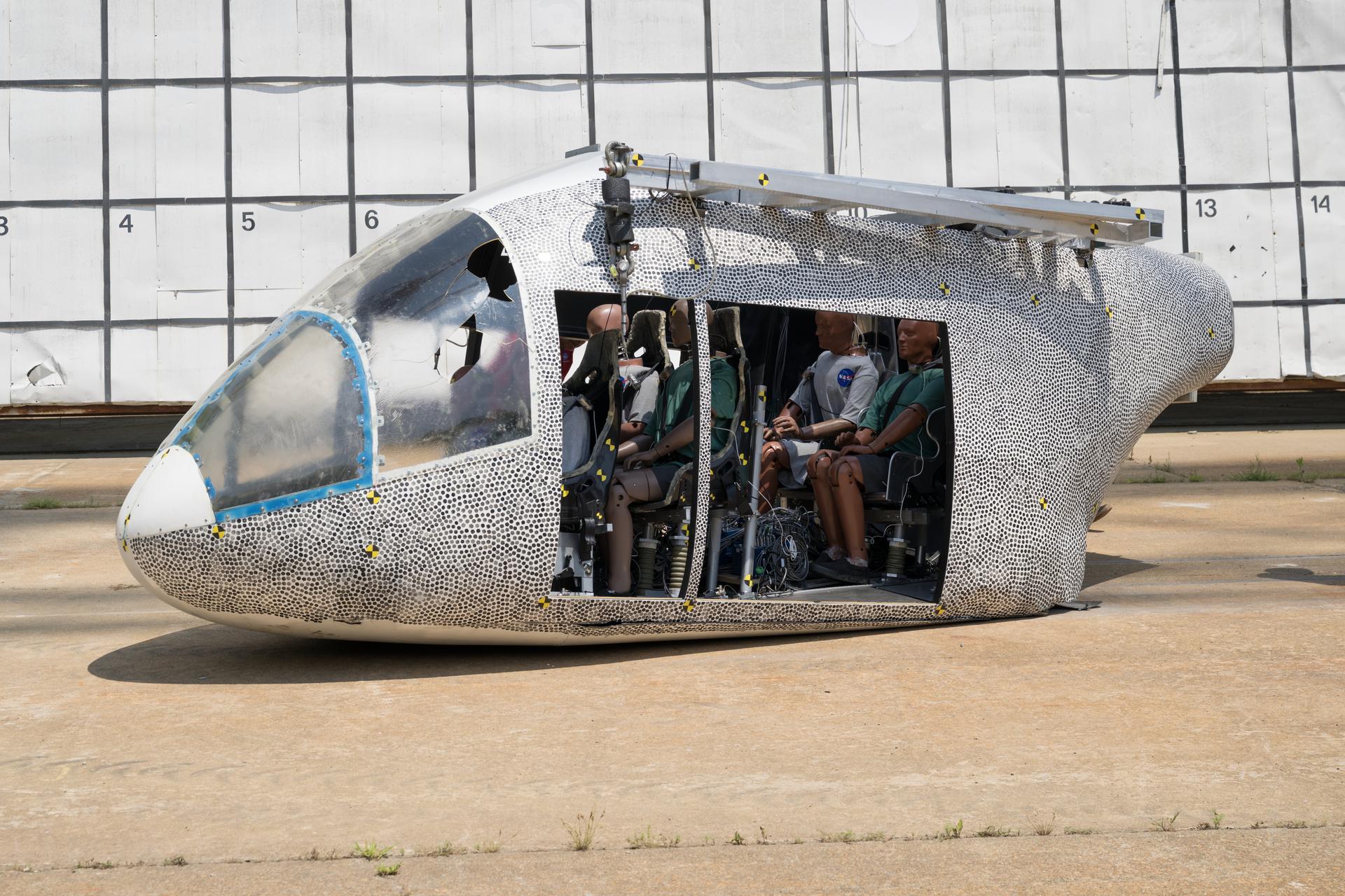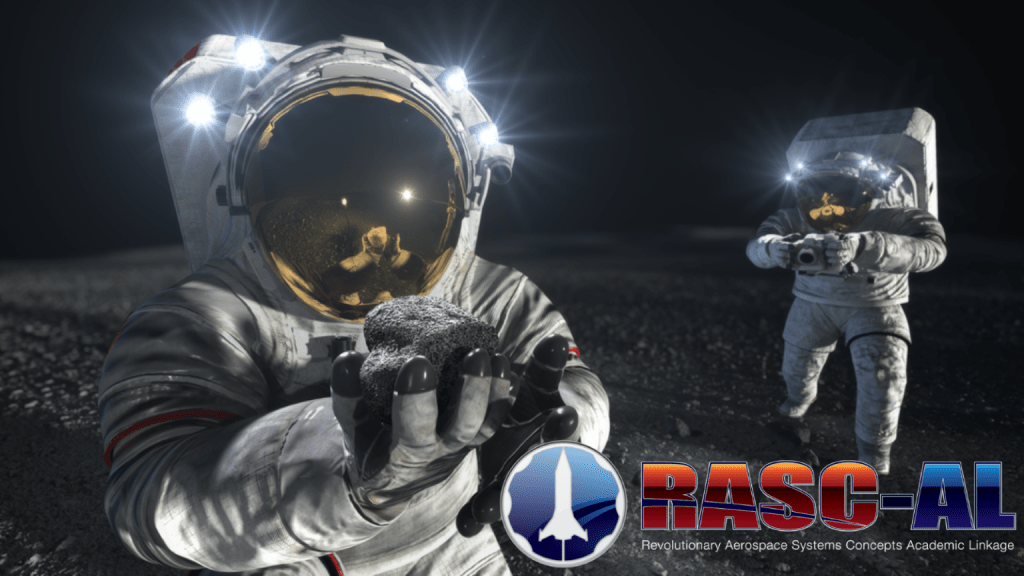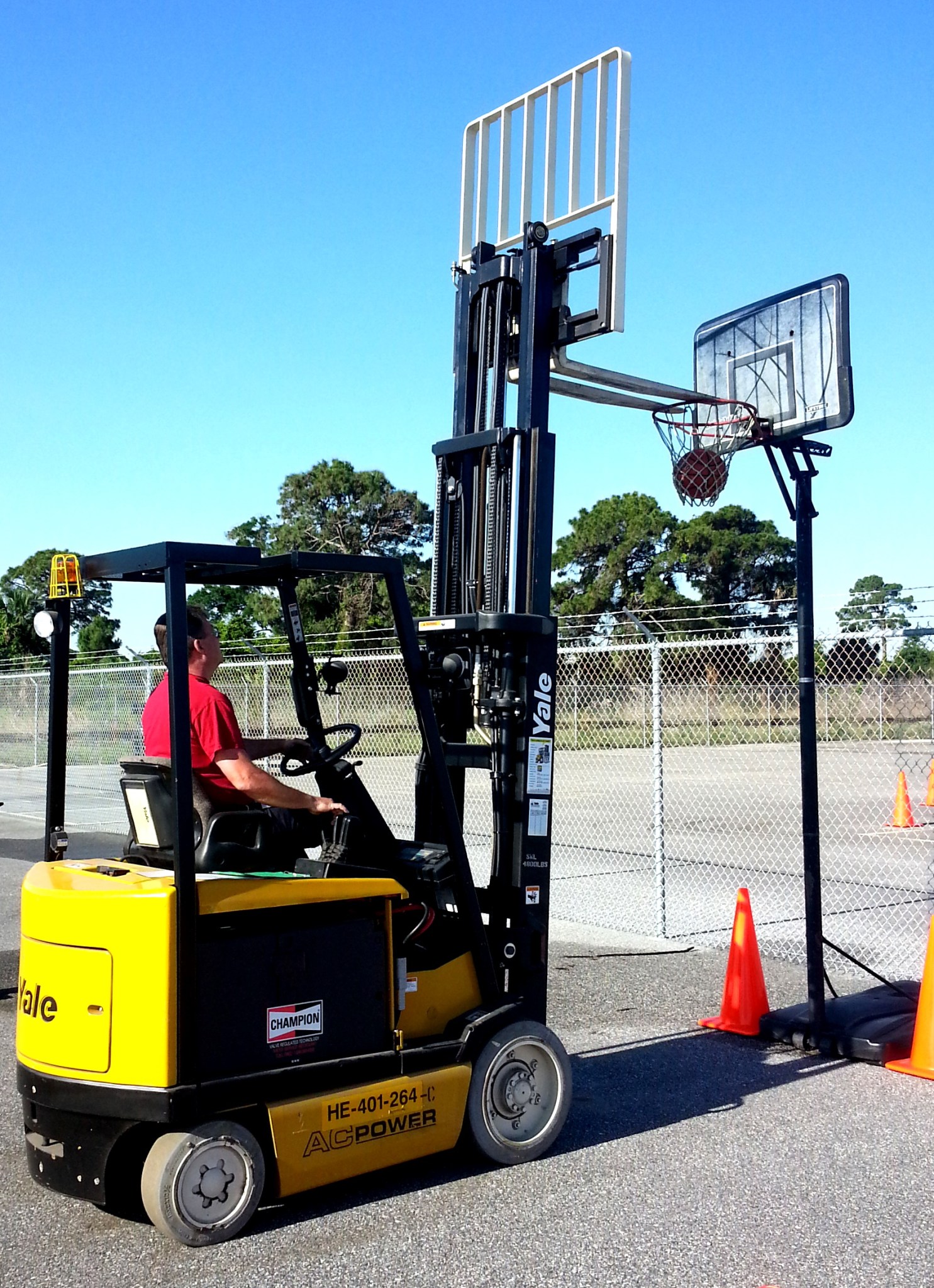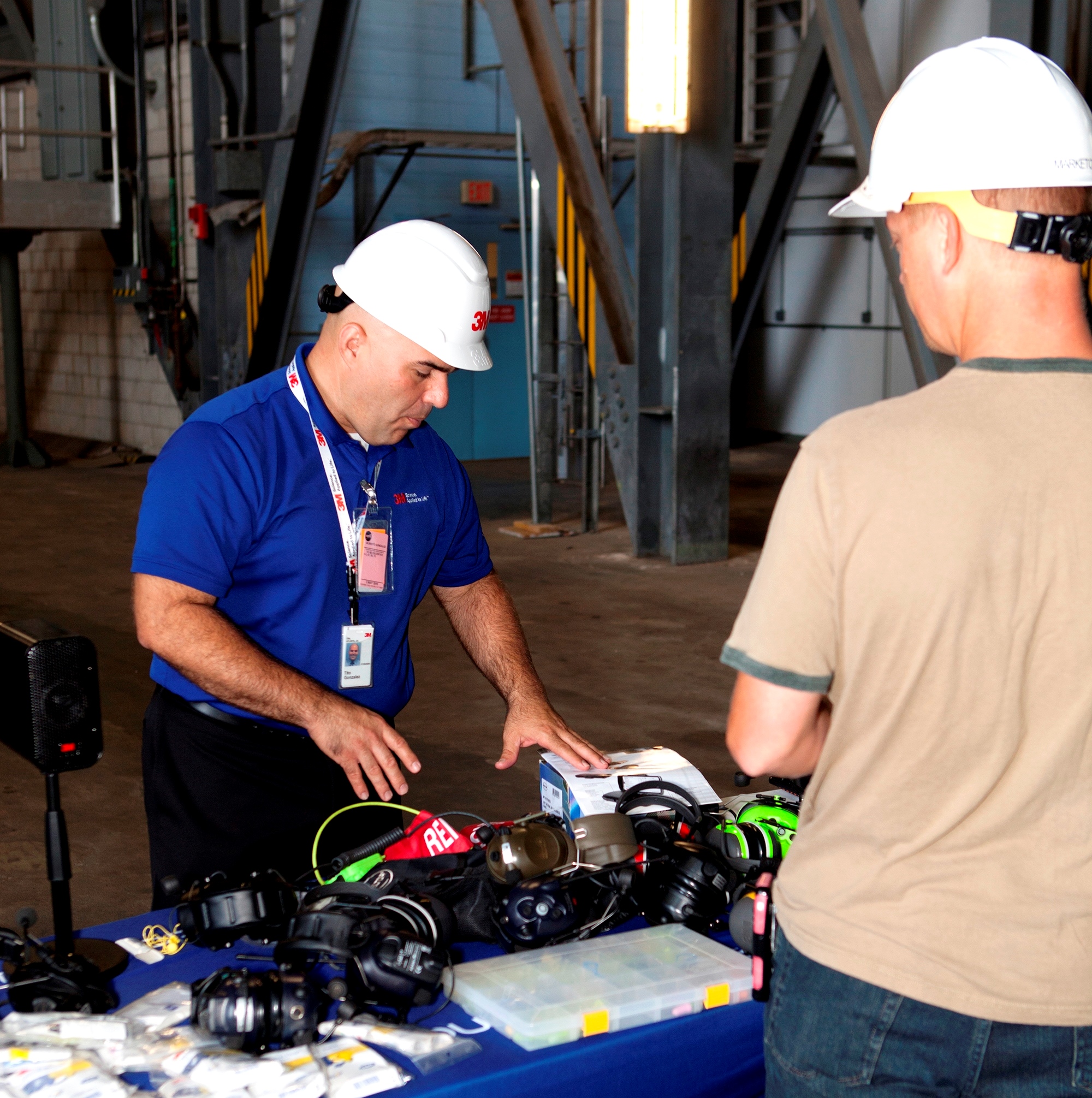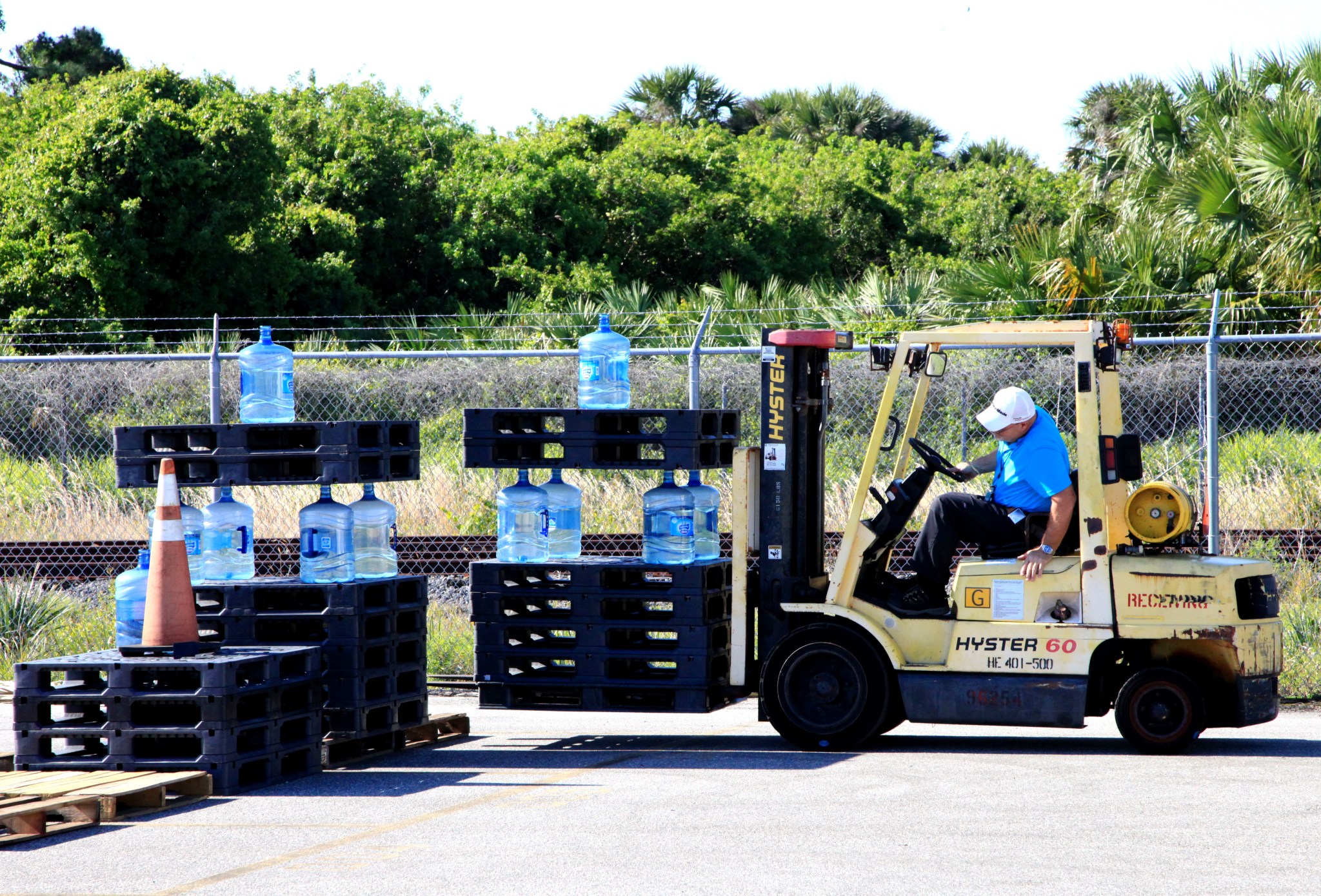By Bob Granath
NASA’s Kennedy Space Center, Florida
In basketball, a slam dunk is worth two points. In a forklift rodeo at NASA’s Kennedy Space Center in Florida, its value is much more. It helps demonstrate the driver is an expert in safely operating a machine that can present hazards if not used properly.
The forklift rodeo was one of many activities taking place during Jacobs’ Safety Week, May 2-6, 2016. The company is the prime contractor for the agency’s Test and Operations Support Contract (TOSC) at the spaceport.
According to Jim LaRocque, Jacob’s director of Safety and Mission Assurance at Kennedy, the emphasis on safety is all about instilling a culture of caring and to aid in mitigating workplace risks and preventing accidents.
“Safety Week is an annual, companywide activity to stress that people are our greatest asset,” he said. “We believe every accident is preventable. This week’s activities are part of our efforts to put tools in place to mitigate the hazards that are inherently present in processing vehicles for spaceflight.”
Jacobs is providing overall management and implementation of ground systems capabilities, flight hardware processing and launch operations at the spaceport.
Working with the Jacobs TOSC team are subcontractors Engineering Research and Consulting Inc. (ERC), and Aerodyne Industries. They provide support for the International Space Station Program, Ground Systems Development and Operations activities, Space Launch System rocket, Orion spacecraft and Launch Services Program.
The TOSC team’s emphasis on safety is designed to address risks and improve further on a national trend toward safer places to work.
According to OSHA – the Occupational Safety and Health Administration — before the agency was created 43 years ago, an estimated 14,000 workers were killed on the job every year. Today, workplaces are much safer and healthier, going from 38 fatal injuries a day to 12.
“Making a living shouldn’t have to cost you your life,” said David Michaels, Ph.D., assistant secretary of Labor for Occupational Safety and Health. “Workplace fatalities, injuries and illnesses are preventable. Safe jobs happen because employers make the choice to fulfill their responsibilities and protect their workers.”
LaRocque explained that his company has done just that making safety a paramount concern. The Jacobs approach focuses on filtering responsibility from the top down.
“The corporation gives responsibility for safety to our program manager, Andy Allen,” he said. “Andy, in turn, expects his directors, managers and supervisors to communicate our ‘culture of caring’ down to each employee. Our approach expects team members to watch out for each other, encouraging everyone to feel empowered to speak up whenever needed.”
LaRocque pointed out that employees will be urged to take at least two hours to visit exhibits or attend activities taking place around the space center.
Joseph Degano of TOSC Safety led a discussion during the week on “Peer Pressure and Safety Behavior.” He noted that in the workplace, peer pressure can be positive or negative and can influence safety behavior. Employees were encouraged to have the “courage” to speak up when they witness an activity that appears unsafe.
“We want our employees to feel comfortable encouraging fellow employees to be safe,” LaRocque said, “Likewise, when someone receives a safety reminder, we want that person to know it’s because we truly care for each other.”
A highlight of the TOSC Safety Week was the forklift rodeo. The points-based competition consisted of forklifts being driven through obstacle courses with skills challenges. These included lifting and stacking items on a pallet.
The “hotshot” basketball challenge involved picking up a basketball with the fork, moving to a basketball goal and carefully moving the lift to allow the ball to drop in the hoop. While a fun activity, the “rodeo” was designed to foster proper safety precautions because, as LaRocque notes, forklifts have inherent dangers of tipping over if not operated properly.
Another activity was a distracted driving demonstration.
Using a simulator, participants completed a driving video course. The first run was without distractions. After that, the participant would spin the “wheel of distraction” to determine which driving distraction he or she would be tasked with, such as texting, reading or fatigue — simulated using special “fatigue goggles.” The driver then tried to perform the driving simulation with the identified distraction. The results dramatically demonstrated the potential results of distracted driving.
LaRocque noted that Jacobs is taking a proactive approach to protecting TOSC team members’ hearing.
Safety Week included a Hearing Conservation Roadshow. Displays involved demonstrations of engineering controls and examples of quiet tool technology. Personal protective equipment (PPE) on display included examples of electronic hearing protection.
“Our approach is to ‘design quiet or buy quiet,’” he said. “If we are building a piece of equipment, we want it to run the least amount of noise as possible. Or, if we are buying a power tool or a machine, we consider which produces the least noise. It’s all about taking into consideration employees’ hearing.”
Pike, one of the largest providers of energy solutions in the U.S., presented their Live Line high-voltage demonstration in the parking lot of the Vehicle Assembly Building. The activity provided an opportunity for the company’s safety experts to demonstrate electrical hazards, safe work procedures, along with the proper use and limitations of PPE.
“While many of the Safety Week activities are designed to be fun, our overall messages are serious,” LaRocque said. “Safety is paramount. Just like we want our astronauts to fly and return safely to Earth, we want our TOSC team members to come to work, do their jobs in a safe environment and go home unharmed to their families at the end of the day.”

